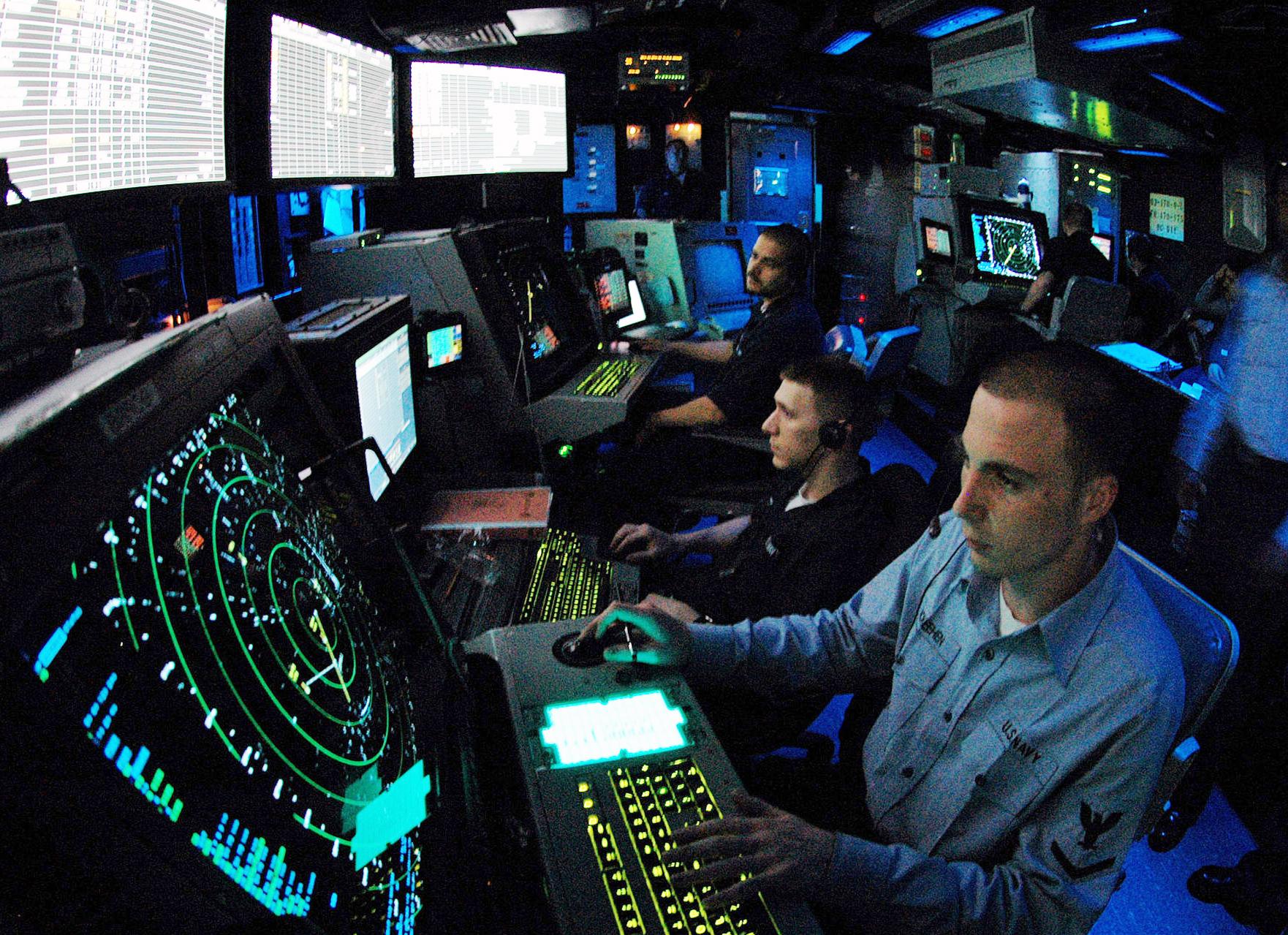Air Traffic Control System Failures: Causes, Consequences, And Solutions

Table of Contents
Causes of Air Traffic Control System Failures
Air traffic control system failures stem from a complex interplay of technological issues, human error, and environmental factors. Understanding these contributing elements is the first step towards building a more resilient and safer air traffic management system.
Technological Failures
Modern ATC systems rely on a sophisticated network of hardware and software. Malfunctions in any part of this network can lead to significant disruptions.
- Hardware malfunctions: Radar systems, communication networks, and data processing units are all subject to hardware failure. Ageing infrastructure and lack of regular maintenance increase this risk.
- Software glitches and bugs: Unexpected system crashes and data corruption due to software bugs can severely impact ATC operations. Regular software updates and rigorous testing are vital to minimize these occurrences.
- Cybersecurity threats and vulnerabilities: ATC systems are increasingly vulnerable to cyberattacks, with potential consequences ranging from data breaches to complete system shutdowns. Robust cybersecurity protocols and regular penetration testing are essential.
- Power outages and infrastructure failures: Power failures can cripple ATC systems, impacting communication and navigation capabilities. Backup power systems and redundant infrastructure are critical for maintaining operational continuity.
- Outdated technology: Outdated technology can increase the likelihood of ATC system failures due to incompatibility with newer aircraft systems or a lack of sufficient redundancy. This highlights the need for continuous technological upgrades and modernization.
Human Error
Human factors play a significant role in ATC system failures. Controller workload, fatigue, and training deficiencies can all contribute to errors.
- Controller fatigue and stress: Long working hours and high pressure situations can lead to fatigue and reduced situational awareness among air traffic controllers, increasing the risk of errors. Implementing effective shift patterns and fatigue management strategies is crucial.
- Inadequate training and insufficient skill levels: Insufficient training can result in operational errors and poor decision-making under pressure. Comprehensive and continuous training programs are essential to ensure controller competency.
- Poor communication and coordination: Miscommunication between controllers or between controllers and pilots can lead to near misses or accidents. Standardized communication protocols and regular training exercises are crucial for improving communication effectiveness.
- Lack of adherence to established procedures and protocols: Deviations from established procedures can lead to errors. Regular audits and adherence checks are necessary to maintain consistent adherence.
- A controller’s failure to correctly interpret radar data: This can lead to a near-miss incident or a more serious collision, emphasizing the importance of clear data presentation and controller training in data interpretation.
Environmental Factors
Environmental conditions can significantly impact ATC system performance and contribute to failures.
- Severe weather conditions: Reduced visibility, strong winds, and heavy precipitation can all impact radar performance and communication reliability, leading to flight delays and cancellations.
- Natural disasters: Earthquakes, floods, and wildfires can damage ATC infrastructure, causing widespread disruptions. Robust disaster recovery plans and geographically dispersed backup systems are necessary.
- Electromagnetic interference: Electromagnetic interference from various sources can disrupt communication and navigation signals, leading to operational errors. Shielding and mitigation strategies are important considerations.
- Heavy snowfall: This can cause power outages and disrupt radar operations, leading to significant flight delays and cancellations, underlining the need for robust infrastructure capable of withstanding adverse weather conditions.
Consequences of Air Traffic Control System Failures
The consequences of ATC system failures can range from minor inconveniences to catastrophic accidents, impacting safety, operations, and the economy.
Safety Risks
The most serious consequence of ATC system failures is the potential for accidents.
- Aircraft collisions: Mid-air collisions or ground collisions can result in significant loss of life and property damage.
- Near-miss incidents: These incidents highlight the potential for more serious accidents and underscore the importance of preventing further occurrences.
- Runway incursions: Aircraft entering a runway without authorization can lead to collisions and other serious incidents. Improved runway management systems and controller training are essential to prevent these events.
- ATC system failures can result in significant loss of life and substantial property damage. This highlights the critical need for reliable and robust systems.
Operational Disruptions
ATC failures cause significant operational disruptions, affecting airlines, airports, and passengers.
- Flight delays and cancellations: These disruptions impact passengers, airlines, and the wider economy.
- Ground delays and congestion: Delays on the ground can further exacerbate disruptions and reduce airport efficiency.
- Increased fuel consumption and operational costs for airlines: Delays lead to increased fuel burn and operational costs, impacting airline profitability.
- System-wide ATC failures can result in cascading delays affecting thousands of flights globally. This demonstrates the interconnectedness of the global air traffic management system.
Economic Impacts
The economic consequences of ATC system failures can be substantial.
- Financial losses for airlines and airports due to disruptions: These losses include lost revenue, increased operational costs, and compensation payments to passengers.
- Loss of tourism revenue and business opportunities: Disruptions can negatively affect tourism and business travel.
- Damage to national and international reputations: Major failures can damage the reputation of air traffic management organizations and national aviation authorities.
- Major ATC failures can cost billions of dollars in economic losses. This underscores the importance of investing in reliable and resilient systems.
Solutions for Preventing Air Traffic Control System Failures
Addressing the root causes of ATC system failures requires a multi-faceted approach involving technological advancements, human factors improvements, and regulatory changes.
Technological Advancements
Technological advancements are crucial for improving the reliability and resilience of ATC systems.
- Implementing redundant systems and backup power sources: This ensures operational continuity in the event of a primary system failure.
- Upgrading to more reliable and resilient hardware and software: This includes adopting new technologies and regularly updating existing systems.
- Strengthening cybersecurity measures to protect against threats: This involves implementing robust security protocols and regularly conducting security audits.
- Developing advanced data analytics and predictive maintenance tools: These tools can help identify potential system failures before they occur, enabling proactive maintenance and reducing downtime.
- The use of AI and machine learning can help identify potential system failures before they occur. This highlights the potential of advanced technologies in improving system reliability.
Human Factors Improvements
Improving human factors is essential for minimizing human error in ATC operations.
- Implementing stricter training programs for air traffic controllers: This includes providing more comprehensive and realistic training scenarios.
- Improving work-rest schedules to reduce controller fatigue: This involves implementing better shift patterns and fatigue management strategies.
- Enhancing communication and coordination protocols: This involves standardizing communication procedures and improving communication technologies.
- Using advanced simulation technologies for training and practice: This allows controllers to practice handling various scenarios in a safe and controlled environment.
- Regular proficiency checks and simulations can significantly reduce human error. This demonstrates the effectiveness of regular training and assessment.
Regulatory and Policy Changes
Strengthening regulatory and policy frameworks is crucial for ensuring the safety and efficiency of ATC systems.
- Strengthening regulations and standards for ATC systems: This ensures that systems meet minimum safety and performance requirements.
- Improving communication and coordination between ATC providers: This includes promoting collaboration and information sharing between different ATC organizations.
- Implementing robust emergency response plans: These plans should outline procedures for handling various types of ATC system failures.
- International cooperation and standardization are essential for improving global air traffic safety. This highlights the need for international collaboration in addressing the challenges of air traffic management.
Conclusion
Air traffic control system failures pose significant risks to aviation safety and efficiency. Understanding the root causes – from technological malfunctions and human error to environmental factors – is critical to developing effective solutions. Implementing technological advancements, enhancing human factors, and strengthening regulatory frameworks are crucial steps in preventing future failures. By proactively addressing these challenges, we can significantly improve the reliability and safety of our air traffic control systems and ensure the continued smooth operation of the global air transportation network. Investing in robust and resilient air traffic control systems is not merely a matter of convenience; it is a fundamental necessity for safeguarding lives and maintaining a thriving global aviation industry. Let's work together to prevent future air traffic control system failures and improve the overall safety and efficiency of air travel.

Featured Posts
-
 Love Monster A Creative Writing Prompt
May 22, 2025
Love Monster A Creative Writing Prompt
May 22, 2025 -
 Occasionverkoop Abn Amro Flink Omhoog Door Meer Autobezitters
May 22, 2025
Occasionverkoop Abn Amro Flink Omhoog Door Meer Autobezitters
May 22, 2025 -
 Scandalous Ceo Affair A Business Implosion
May 22, 2025
Scandalous Ceo Affair A Business Implosion
May 22, 2025 -
 Abn Amro Kwartaalcijfers Analyse En Impact Op Aex
May 22, 2025
Abn Amro Kwartaalcijfers Analyse En Impact Op Aex
May 22, 2025 -
 Testez Vos Connaissances Sur La Loire Atlantique Un Quiz Histoire Gastronomie And Culture
May 22, 2025
Testez Vos Connaissances Sur La Loire Atlantique Un Quiz Histoire Gastronomie And Culture
May 22, 2025
Latest Posts
-
 The Strain On Taylor Swift And Blake Livelys Friendship A Look At The Legal Battle
May 22, 2025
The Strain On Taylor Swift And Blake Livelys Friendship A Look At The Legal Battle
May 22, 2025 -
 Blake Lively And Taylor Swift Subpoena Report Fuels Friendship Strain Speculation
May 22, 2025
Blake Lively And Taylor Swift Subpoena Report Fuels Friendship Strain Speculation
May 22, 2025 -
 Taylor Swift And Blake Livelys Friendship A Rift Caused By Legal Troubles
May 22, 2025
Taylor Swift And Blake Livelys Friendship A Rift Caused By Legal Troubles
May 22, 2025 -
 Blake Lively And Taylor Swifts Friendship A Look At The Reported Strain Following Subpoena
May 22, 2025
Blake Lively And Taylor Swifts Friendship A Look At The Reported Strain Following Subpoena
May 22, 2025 -
 Yevrokomisar Pro Vidmovu Ukrayini Vid Nato Analiz Politichnikh Naslidkiv
May 22, 2025
Yevrokomisar Pro Vidmovu Ukrayini Vid Nato Analiz Politichnikh Naslidkiv
May 22, 2025
